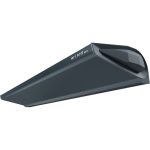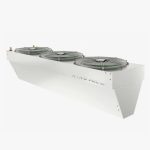Fish have shaped human civilization since time immemorial—serving as a cornerstone of nutrition, culture, and innovation. Their migrations, spanning thousands of kilometers across oceans and rivers, embody a natural algorithm honed over millions of years. This journey, deeply embedded in ecological and evolutionary history, reveals profound parallels with human technological progress—especially in navigation, logistics, and adaptive design.
Fish Migration as a Living Algorithm: Decoding Nature’s Navigation Systems
From the earliest days, fish have relied on an intricate navigation system that rivals human GPS technology in precision. Using geomagnetic fields to sense Earth’s magnetic poles and celestial cues such as the position of the sun and stars, fish achieve remarkable accuracy over vast distances. For example, salmon return to their natal rivers with over 90% accuracy, guided by internal biological compasses and environmental memory encoded through generations.
“Nature’s migration algorithms are not mere instinct—they are evolutionary masterpieces of energy efficiency, resilience, and environmental responsiveness.”
Biological Navigation: How Fish Map the World
Scientists have identified two primary navigation tools: geomagnetic sensing and celestial orientation. Magnetoreceptors in fish brains detect subtle variations in Earth’s magnetic field, allowing orientation even in featureless open seas. Meanwhile, species like eels and tuna align their movement with celestial patterns during twilight and nocturnal migration, synchronizing behavior with daily light cycles. This dual system ensures survival across changing and unpredictable environments.
- Geomagnetic sensing uses iron-based particles and light-sensitive proteins (cryptochromes) in sensory organs.
- Celestial navigation relies on internal circadian clocks calibrated by sunrise and sunset.
- Environmental memory and social learning enhance route fidelity across generations.
Comparative Insights: Fish Navigation vs. Human GPS and Digital Modeling
While GPS systems rely on satellite networks and digital calculations, fish migration demonstrates a low-energy, highly adaptive approach. Human models now increasingly borrow from fish behavior to improve predictive accuracy in wildlife corridors and autonomous navigation. For instance, AI-driven fish tracking systems use machine learning to map migration flows in real time, mirroring how fish adjust routes dynamically in response to ocean currents and obstacles.
| Feature | Fish Migration | Human GPS & Navigation | Adaptive Learning |
|---|---|---|---|
| Navigation Basis | Geomagnetism, stars, memory | Satellite signals, algorithms | Real-time environmental feedback |
| Error Tolerance | High—maintains route over thousands of km | Medium—requires constant signal | Moderate—adapts mid-journey |
| Energy Efficiency | Minimal metabolic cost | High power consumption | Optimized for sustainability |
Biomimicry in Human Systems: From Fish Patterns to Urban Innovation
The migration rhythms of fish—cyclical, synchronized, and resilient—offer blueprints for designing human systems. Urban planners and engineers study fish schooling behavior to optimize traffic flow, where decentralized coordination minimizes congestion. Similarly, supply chains inspired by migration corridors use adaptive routing algorithms to maintain efficiency amid disruptions, much like fish reroute around dams or shifting currents.
- Fish schools use simple local rules to form complex, adaptive patterns—modeled in swarm robotics and autonomous vehicle fleets.
- Migration timing and route shifts inform predictive logistics models, improving delivery resilience.
- Energy-efficient movement patterns guide sustainable transport design, reducing fuel use and emissions.
Ethical Dimensions: Balancing Innovation with Conservation
Emulating fish migration must go hand-in-hand with protecting their habitats and biodiversity. Over-reliance on nature-inspired models without safeguarding aquatic ecosystems risks undermining the very systems we seek to understand. Destruction of spawning grounds, pollution, and climate change directly threaten migratory routes, eroding both ecological balance and future innovation potential.
Key ethical framework elements include:
- Habitat preservation as a prerequisite for sustainable biomimicry.
- Policy integration linking innovation with conservation goals.
- Community engagement in protecting migratory corridors.
- Long-term monitoring and adaptive management based on ecological feedback.
The Future of Fish-Inspired Innovation: Closing the Loop with The Journey of Fish Theme
As technology advances, real-time fish tracking combined with artificial intelligence is transforming migration corridor management. AI platforms now predict movement patterns using satellite telemetry and oceanographic data, enabling proactive conservation and smarter infrastructure planning. This evolution closes the loop with the original theme: fish migration is not just a natural wonder—it is a dynamic blueprint guiding sustainable human progress.
“The true measure of innovation lies not in copying nature, but in honoring its design wisdom through responsible stewardship.”
Emerging Frontiers
Emerging tools include bio-integrated sensors for real-time migration tracking, AI-powered predictive analytics, and adaptive urban designs that mimic fish schooling to reduce energy use and improve resilience. These systems demonstrate how deep ecological insight can drive transformative, sustainable innovation.
| Technology | Bio-logging tags with magnetoreception sensors | AI route prediction from real-time tracking | Swarm-based logistics inspired by fish patterns |
|---|---|---|---|
| Impact | Improved conservation and corridor protection | Enhanced supply chain resilience and efficiency | Reduced environmental footprint in transport and infrastructure |
The journey of fish—ancient, instinctive, and adaptive—continues to inspire and guide human innovation. By deeply studying their navigation, resilience, and harmony with nature, we craft smarter systems that are not only efficient but also ecologically responsible. This is the essence of the theme: fish migration as both a blueprint and a living guide for sustainable progress.
Return to The Journey of Fish: From Ancient Migration to Modern Games



 AC серия
AC серия
 Электрические тепловые завесы Wing White Белые
Электрические тепловые завесы Wing White Белые Водяные тепловые завесы WING White Белые
Водяные тепловые завесы WING White Белые Тепловые завесы Wing Dark Черные
Тепловые завесы Wing Dark Черные Wing PRO тепловые завесы
Wing PRO тепловые завесы